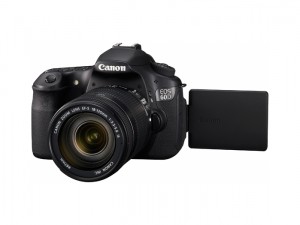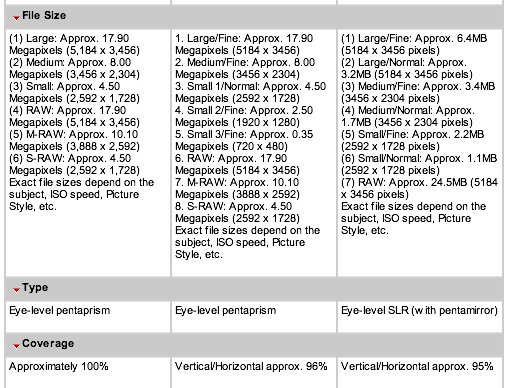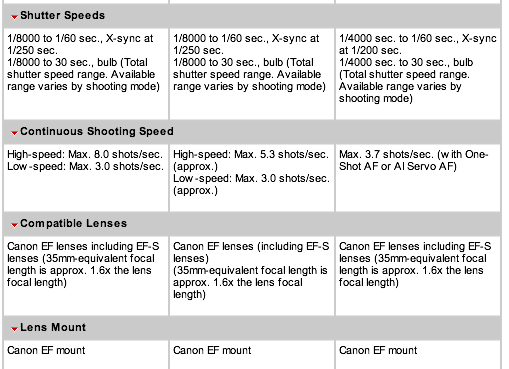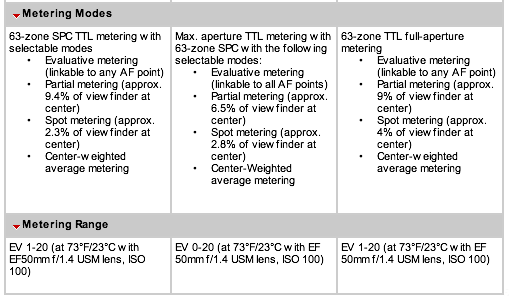Last Updated on 10/20/2011 by Chris Gampat
Photographers everywhere that want to upgrade their equipment have been extremely confused about whether to upgrade to the Canon 60D, T2i, or the 7D
DSLRs. Since I’ve reviewed the 7D and T2i and had hands-on time with the 60D, here are some pointers.
(Update 4/2/2011) We have added in the full Canon T3i review as well as sections of our Canon 60D review.
Complete Reviews
60D
This posting links over to Dan Havlik’s report for the PDN Gear Guide on the 60D. I shot the camera side-by-side with him.
Day 1– First analysis
Day 2– Shooting motorcycles
Day 3– Photographing life.
To Capture Life– A posting I wrote for BHInsights.com.
T2i
Day 1: Spent trying to get accustomed and used to the camera as well as citing observations.
Day 2: Tested out while at a party and get-together. All photos shot in RAW mode.
Day 3: Used while exploring Long Island, New York. People that use this camera will surely use it for sightseeing purposes.
On the set of a Podcast: The T2i performed wonderfully on the set of a video podcast for NerdBlerp.com
Recommended Items for the Camera: Those of you that are looking to purchase the camera may perhaps want to take a look at my essential items guide.
Used to shoot photos for the reviews I did over at 2D-x.com here and here.
7D
Night 1– The camera and two prime lenses documented a Jewish Seder during the week of Passover. It performed very well and users of this camera may be asked to actually join a family at dinner and document the happenings as they progress throughout the night.
Day 2– The 7D and 24-105mm F4 L IS went to the giant pillow fight in Union Square. While the FPS kept up, the autofocus couldn’t quite capture the quickly moving combatants at varying distances and at such as fast speed too. But it did withstand the punishment of elbows, heads, shoulders and pillows knocking it about. When the autofocus did work correctly, it captured some wonderful images. If you’re getting into a warzone like this, perhaps you’re better off with a 1D Mk IV.
With the Sun Sniper Camera Strap– This strap has replaced the Canon strap on my 7D as it typically holds my longer lenses during events and it’s also the camera I go to when I need to quickly capture something. Along with the 5D Mk II, I’ve run into nothing that the combined two can’t tackle.
Day 3– Testing at a get-together of NYC gaming journalists at a bar. Autofocus was fine in the dim light and mostly stagnant people. As was the high ISO ability shooting at ISO 3200 and above. All photos were shot in JPEG for truly showing the noise levels.
On the Set of a Podcast- The 7D performed much better in terms of manipulation vs the T2i. Noise levels in movie mode seemed to be the same.
T3i
Day 1– Getting a feel for the camera.
Day 2– testing the camera’s creative filters. While they make great prints, I didn’t care much for them to be honest. The reason for this is because I prefer the process of stepping into the digital darkroom and creating the art myself.
Day 3– street photography at night using the high ISO settings. The results were really quite good.
Day 4– shooting portraits using a casual approach to capture candid emotions. Afterward I used Lightroom 3 to tweak the image quality.
Day 5– Event shooting, portraits with wireless flash control, and more night scenes.
Comparison (And why you’re all probably confused, according to Canon’s website)
Weight
T2i- 18.7 oz. (530g)
60D- 755g / 26.6 oz
7D- 900 grams – 31 ounces
The T2i is rightfully the lightest due to the construction of the body, which is all plastic. The 60D has aluminum/polycarbonate/glass/plastic resin body is while the 7D has a magnesium alloy body. The latter is built for much rougher and tougher work that professionals will run into.
High ISO
From my review:
“Users of the T2iwill be very, very pleased with the High ISO abilities in this camera. Able to shoot up to ISO 6400, the files are still very usable and post-processing will take care of most of the image noise problems. If not, editors can always get creative in their editing to use the image noise to their advantage as the files still do retain a lot of detail.
If coupled with the 430 EX II and shooting in extremely dimly lit conditions, one can shoot with ease at ISO 800 and still get very crispy shots while shooting handheld. This will come in handy if users happen to be shooting a party.
As a side note, this is all best done while shooting in RAW mode. Otherwise, the image noise will be harder to eliminate in JPEG mode.
Further, get rid of your kit lens. Shoot with something like a 50mm F1.8 II, 85mm F1.8 II or 24-105mm F4 L IS. And if shooting video, get a Rode Videomic if you need better sound.”
The high ISO abilities of the 60Dshould be noted to be similar to those of the T2i because of the single DIGIC 4 processor but the same amount of megapixels.
If you really want great high ISO images, you should go for the 7D. The 7Dis only a bit behind the 5D Mk II
which is a big feat.
The Canon T3i is on par with the Canon T2i, but in my tests I saw very slightly better color in the T3i. The 60D’s high ISOs seemed to be better than the T3i’s, but still not on par with the 7D.
Shooting Speed
T2i- 3.7fps
60D- 5.3fps
7D- 8fps
Figure out your needs: If you’re shooting casually, go for a T2i. If you’re shooting a bit more seriously with the probable intention of sales, go for the 60D. If you’re shooting professionally, you should go get the 7D.
Once again, this is regards to shooting speed performance. The T2ican shoot images more than well enough for something like events. Its autofocus is a different story.
The T3i and the T2i are essentially the same still.
Autofocus
Simply put:
T2i- older AF system
60D– older AF system with slight tweaks but still performs like a Rebel. Actually, it’s better, especially with L glass and other lenses that we recommend.
7D- totally new one. One of the best I’ve used.
T3i- just like the T2i.
If you’re a user that plans to manually focus at times or always use the center AF point and wants something more affordable, get the T2i. If you want that same autofocus system but want higher FPS shooting, get the 60D.
The 7Dwas designed to take out the Nikon D300s, a camera with an extremely good autofocus system. Hands down, this one is the best of the three.
With Flashes
T2i- No wireless flash control
60D- Wireless flash control
7D- Wireless flash control
T3i- Wireless flash control finally comes to the Rebel series in the form of EasyWireless, Custom, and Manual flash control modes.
If you plan on using your camera and pointing the flash towards the ceiling the entire time, get the T2i. Any flash above the 430 EX II will also boost the AF performance. The 60Dis a much cheaper alternative to the 7D. Granted, as we’ve seen with the 7D SV, the camera can be tailored to studio work.
There are a large segment of people out there that say, “I don’t want to shoot with a flash.” If you’re one of those, go buy a T2i.
Ergonomics
T2i- Awkward construction. All plastic body, changing settings is a bit more cumbersome.
60D- More professionally oriented. More solid body as well. The rotating LCD screen is a must for video capabilities. Best DSLR I’ve ever used for street photography.
7D- Best construction and button layout. My 7Dhas taken quite a bit of punishment already.
T3i- Minor quirks make this camera best used in aperture priority for when you need to take photos quickly.
If you’re shooting casually or rarely run into any rough occasions, go for the T2i. If you’re shooting loads of video, go for the 60D. If you’re shooting professionally and need a workhorse, get the 7D.
Menus
The menus for all the cameras are essentially the same. You won’t really find any major differences except for autofocus performance tweaks in the 7D and the filters in the 60D.
Extra Features
T2i- none, really.
60D– Special mode selector, wireless flash control, art filters, articulating LCD screen.
7D- Wireless flash control, higher shooting FPS.
T3i– creative filters, wireless flash control, crop movie mode.
If you’re more of a hobbyist, clearly go for the 60D. If you need professional results, get the 7D.
Movie Mode
They’re truthfully all the same. Don’t bother. If you’re primarily shooting movies though, the 60Dis better for ergonomics and the 7D is better for image quality. The reasons for these are the articulating LCD and the dual DIGIC 4 processors, accordingly.
Where to Purchase
Please Support the Phoblographer
We love to bring you guys the latest and greatest news and gear related stuff. However, we can’t keep doing that unless we have your continued support. If you would like to purchase any of the items mentioned, please do so by clicking our link and then purchasing the items as we then get a small portion of the sale to help run the website.








